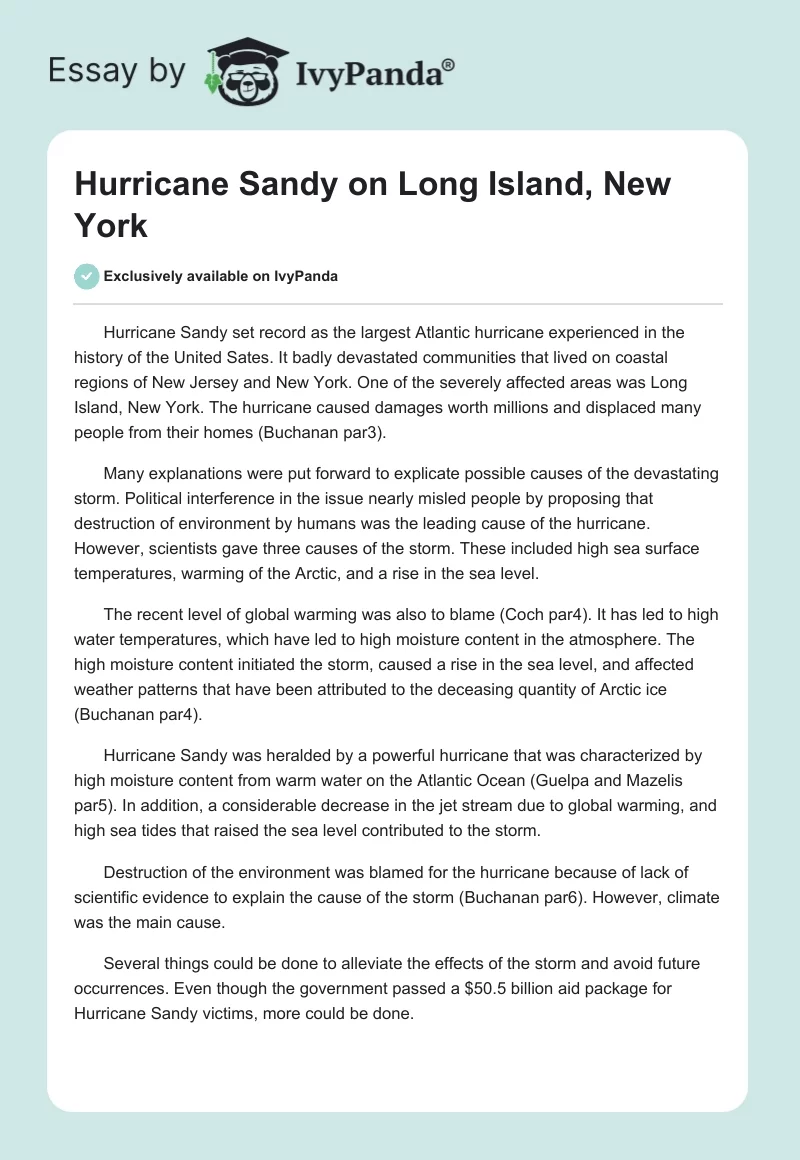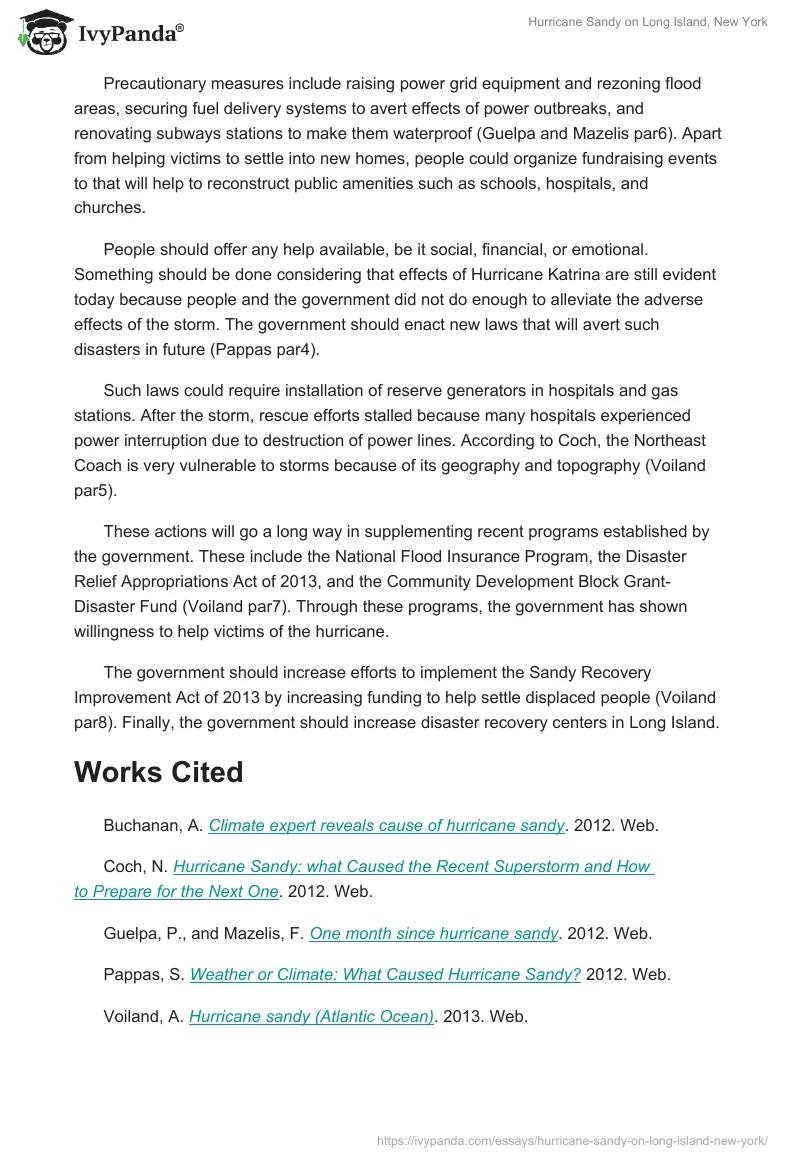Hurricane Sandy set record as the largest Atlantic hurricane experienced in the history of the United Sates. It badly devastated communities that lived on coastal regions of New Jersey and New York. One of the severely affected areas was Long Island, New York. The hurricane caused damages worth millions and displaced many people from their homes (Buchanan par3).
Many explanations were put forward to explicate possible causes of the devastating storm. Political interference in the issue nearly misled people by proposing that destruction of environment by humans was the leading cause of the hurricane. However, scientists gave three causes of the storm. These included high sea surface temperatures, warming of the Arctic, and a rise in the sea level.
The recent level of global warming was also to blame (Coch par4). It has led to high water temperatures, which have led to high moisture content in the atmosphere. The high moisture content initiated the storm, caused a rise in the sea level, and affected weather patterns that have been attributed to the deceasing quantity of Arctic ice (Buchanan par4).
Hurricane Sandy was heralded by a powerful hurricane that was characterized by high moisture content from warm water on the Atlantic Ocean (Guelpa and Mazelis par5). In addition, a considerable decrease in the jet stream due to global warming, and high sea tides that raised the sea level contributed to the storm.
Destruction of the environment was blamed for the hurricane because of lack of scientific evidence to explain the cause of the storm (Buchanan par6). However, climate was the main cause.
Several things could be done to alleviate the effects of the storm and avoid future occurrences. Even though the government passed a $50.5 billion aid package for Hurricane Sandy victims, more could be done.
Precautionary measures include raising power grid equipment and rezoning flood areas, securing fuel delivery systems to avert effects of power outbreaks, and renovating subways stations to make them waterproof (Guelpa and Mazelis par6). Apart from helping victims to settle into new homes, people could organize fundraising events to that will help to reconstruct public amenities such as schools, hospitals, and churches.
People should offer any help available, be it social, financial, or emotional. Something should be done considering that effects of Hurricane Katrina are still evident today because people and the government did not do enough to alleviate the adverse effects of the storm. The government should enact new laws that will avert such disasters in future (Pappas par4).
Such laws could require installation of reserve generators in hospitals and gas stations. After the storm, rescue efforts stalled because many hospitals experienced power interruption due to destruction of power lines. According to Coch, the Northeast Coach is very vulnerable to storms because of its geography and topography (Voiland par5).
These actions will go a long way in supplementing recent programs established by the government. These include the National Flood Insurance Program, the Disaster Relief Appropriations Act of 2013, and the Community Development Block Grant-Disaster Fund (Voiland par7). Through these programs, the government has shown willingness to help victims of the hurricane.
The government should increase efforts to implement the Sandy Recovery Improvement Act of 2013 by increasing funding to help settle displaced people (Voiland par8). Finally, the government should increase disaster recovery centers in Long Island.
Works Cited
Buchanan, A. Climate expert reveals cause of hurricane sandy. 2012. Web.
Coch, N. Hurricane Sandy: what Caused the Recent Superstorm and How to Prepare for the Next One. 2012. Web.
Guelpa, P., and Mazelis, F. One month since hurricane sandy. 2012. Web.
Pappas, S. Weather or Climate: What Caused Hurricane Sandy?2012. Web.
Voiland, A. Hurricane sandy (Atlantic Ocean). 2013. Web.


